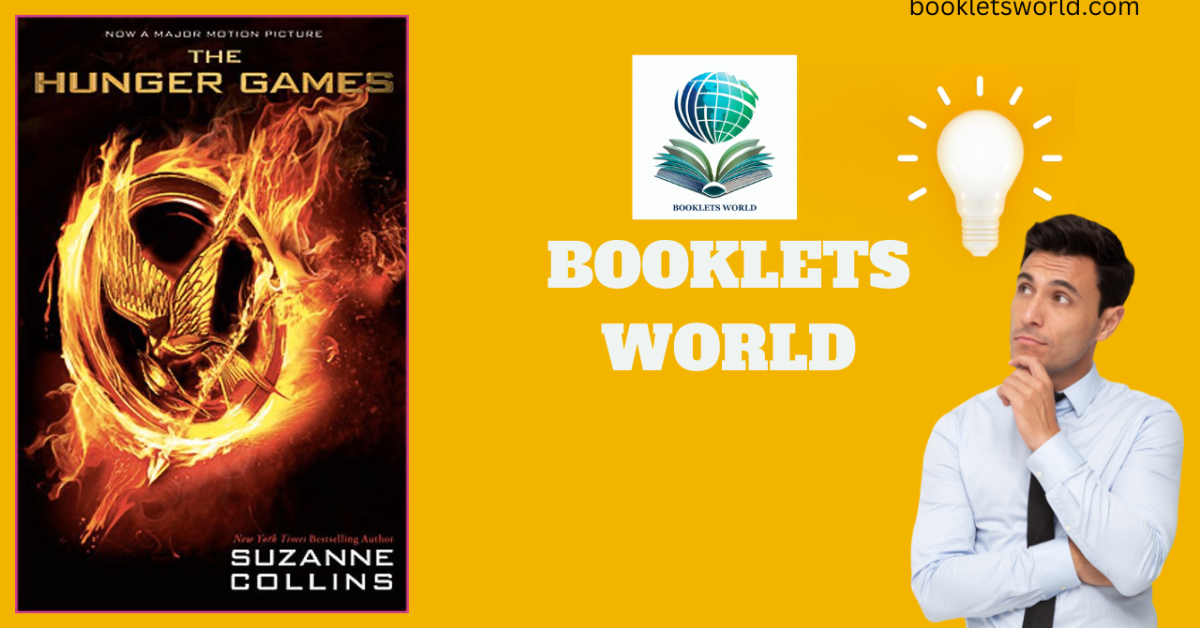The Hunger Games book summary: “The Hunger Games” is more than just a young adult novel—it’s a profound exploration of a dystopian world where social inequality is taken to chilling extremes. In this human-friendly summary, we’ll embark on a comprehensive journey through the heart-pounding saga of survival, rebellion, and the enduring human spirit.
Author’s Background
Before we embark on our journey through the dystopian world of “The Hunger Games,” let’s take a moment to get to know the brilliant mind behind this iconic series. Suzanne Collins, born on August 10, 1962, in Hartford, Connecticut, is a versatile American novelist and television writer. Her early career included writing for children’s television programs, but it was her venture into the realm of young adult fiction that catapulted her to worldwide acclaim. Drawing inspiration from her father’s experiences in the Vietnam War and her concerns about reality television, Collins crafted a narrative that would resonate with readers of all ages.
The Setting
Suzanne Collins immerses us in the fictional nation of Panem, a world divided into the Capitol and twelve struggling districts. The Capitol is the epitome of opulence and power, while the districts endure poverty and oppression. The Capitol’s cruel annual event, the Hunger Games, serves as both a gruesome spectacle and a form of punishment for a past rebellion. Each year, one boy and one girl, known as “tributes,” are chosen from each district to participate in this televised battle to the death.
Meet Katniss Everdeen
Our story’s protagonist, Katniss Everdeen, resides in District 12—the poorest and most desolate of all the districts. Katniss is a resourceful young woman who provides for her family by hunting in the forbidden woods. Her life takes an extraordinary turn when she voluntarily takes her sister Prim’s place as the female tribute in the Hunger Games after Prim’s name is drawn in the lottery.
The Journey Begins
Katniss, along with her male counterpart Peeta Mellark, is whisked away to the Capitol, where they undergo a remarkable transformation for the grand opening ceremony of the Hunger Games. The stark contrast between the Capitol’s extravagance and the districts’ destitution becomes glaringly evident. As Katniss and Peeta step into the brutal arena, they must navigate treacherous traps, formidable adversaries, and the ever-watchful gaze of the Capitol’s audience.
Survival and Rebellion
Throughout the Hunger Games, Katniss’ unyielding determination to survive and protect Peeta captivates the audience, sparking a sense of rebellion in the districts. Her defiance becomes a symbol of hope for those who have suffered under the Capitol’s oppressive rule. The novel explores themes of power, sacrifice, and the ethical dilemmas faced by its characters.
FAQs:
1. What’s the premise of “The Hunger Games”?
- “The Hunger Games” is a captivating novel set in a dystopian society, where the oppressive Capitol forces young tributes from twelve districts to battle to the death in a televised event known as the Hunger Games.
2. Who authored “The Hunger Games”?
- Suzanne Collins is the brilliant writer behind “The Hunger Games.”
3. Who serves as the primary character in the book?
- The central character is Katniss Everdeen, a courageous girl from District 12 who becomes the face of resistance against the Capitol’s tyranny.
4. What themes are explored in the book?
- “The Hunger Games” delves into themes of survival, inequality, sacrifice, and the unyielding human spirit in the face of overwhelming adversity.
5. How many books constitute “The Hunger Games” series?
- “The Hunger Games” is the inaugural installment in a trilogy, followed by “Catching Fire” and “Mockingjay.”
6. Is “The Hunger Games” suitable for young readers?
- While it falls under the young adult fiction category, it’s advisable for older teens and adults due to its intense themes, violence, and social commentary.
7. What cultural and literary impact did “The Hunger Games” have?
- The series ignited discussions on topics such as power, social justice, and the consequences of reality TV. It also spawned successful film adaptations and a dedicated fan community.
8. Can one enjoy the book even if they’ve seen the movies?
- Absolutely! The books offer deeper insights into the characters and their inner thoughts, making them a rewarding read even for those who’ve watched the films.
9. Are there any related works like prequels or spin-offs to The Hunger Games book summary?
- Yes, Suzanne Collins released a prequel titled “The Ballad of Songbirds and Snakes,” which delves into the early history of the Hunger Games.
10. Why should I consider reading “The Hunger Games”? – “The Hunger Games” provides an enthralling and thought-provoking experience, exploring pertinent societal issues. It’s a must-read for fans of dystopian fiction with a powerful message.
Conclusion-The Hunger Games book summary
The Hunger Games book summary: It is not just a heart-pounding adventure—it’s a thought-provoking commentary on the consequences of a society driven by power and control. Through the eyes of Katniss Everdeen, we witness the resilience of the human spirit in the face of adversity and tyranny. As you delve into the pages of this unforgettable saga, you’ll find yourself on an emotional rollercoaster, cheering for Katniss and her unwavering quest for a better world. “The Hunger Games” is a powerful reminder that even in the darkest of times, hope and courage can spark the flames of revolution and change.
This post was all about The Hunger Games book summary, if you like to read more books summary, click here.


2 thoughts on “The Hunger Games book summary”